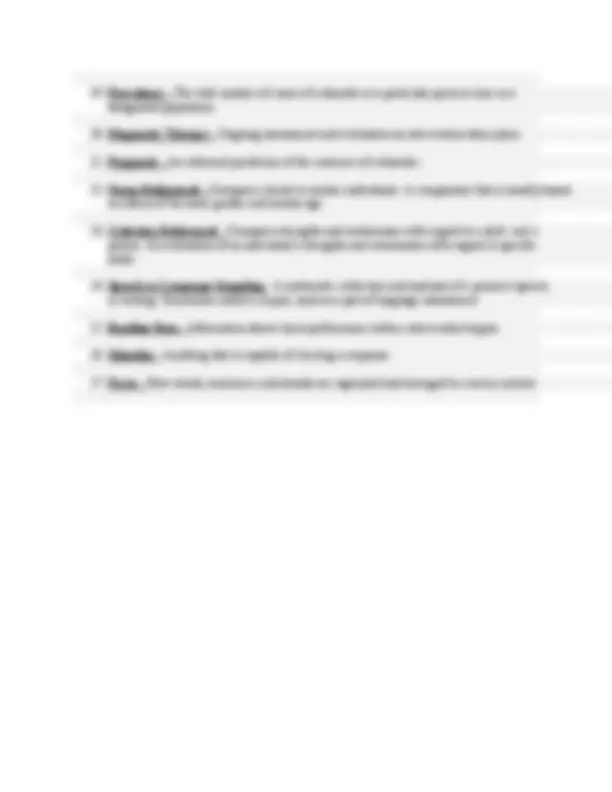
Chapter 2 Terms - 27 terms total
1. Sociolinguistics - The study of influences such as culture identity, setting, and participants on
communicative variables.
2. Language - A socially shared code that is used to represent concepts through the use of
arbitrary symbols and rule-governed combinations of those symbols.(Characteristics of
language: a socially-shared tool, a rule-governed system, an arbitrary code, a generative
process, a dynamic scheme.)
3. Phonology - Hearing and speaking sounds. The rules of language governing the sounds that
make syllables and words. The study of the sound systems of language.
4. Morpheme - Smallest grammatical/meaningful unit within a language.
5. Bound Morphemes - Can’t stand by itself, usually a word ending or beginning. A morpheme
that must be attached to a free morpheme to comm. meaning; grammatical morpheme.
6. Semantics - The study of word and language meaning.
7. Intonation - Pitch movement within an utterance.
8. Kinesics - The study of bodily movement and gesture. Also known as body language.
9. Proxemics - The study of physical distance between people.
10. Chronemics - The study of the effect of time on communication.
11. Etiology - The cause or origin of a problem; also the study of cause.
12. Congenital - Present at birth.
13. Acquired - Occurring after birth.
14. Dialects - A linguistic variation that is attributable primarily to geographic region or foreign
language background. It includes features of form, content, and use.
15. Voice - Vocal tone and resonance.
16. Articulation - Rapid and coordinated movement of the tongue, teeth, lips, and palate to
produce speech sounds.
17. Stuttering - A disorder of speech fluency characterized by hesitations, repetitions,
prolongations, tension, and avoidance behaviors.
18. Dysphagia - A disorder of swallowing.










